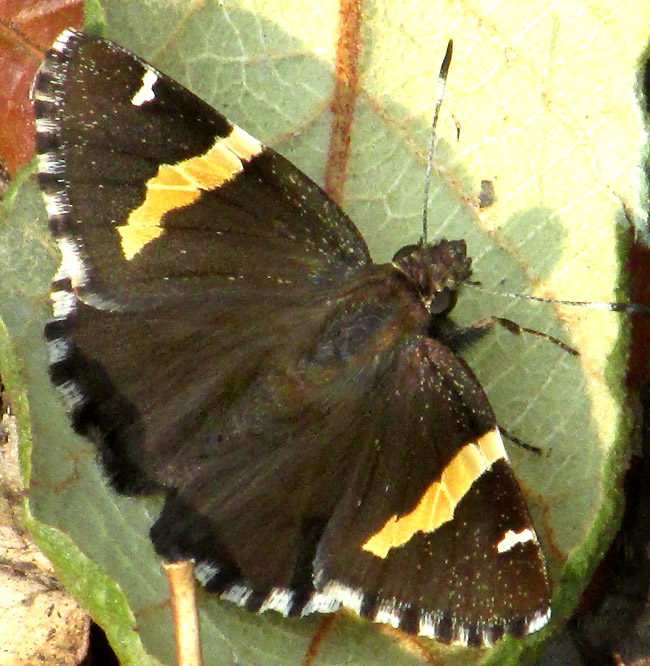Excerpts from Jim Conrad's
Naturalist Newsletter
Entry dated April 19, 2024, from notes taken about 1.5km northeast of Puerto de los Velazquez, Municipality of Pinal de Amoles; N21.134°, W99.667°, elevation ~2760 meters (~9050 feet); oak/pine forest on limestone bedrock; east-central Querétaro state, MÉXICO
GOLDEN BANDED-SKIPPER

In sharp, early morning, high-elevation chill, the above individual had found a spot of bright sunlight on which to bask. It was a welcome sight for various reasons, among which was the thought that volunteer butterfly-identifier Bea up in Ontario might be glad to see it. She was, and it took her only a few minutes to peg the species as the Golden Banded-Skipper, AUTOCHTON CELLUS. Some web pages place the hyphen between "Golden" and "Banded," but on pages at the most authoritative websites, it's designated as Golden Banded-Skipper.
Sometimes atop mountains relict populations with rare organisms turn up, but the Golden Banded-Skipper isn't one of them. The species is commonly seen in the US southeastern states and upland parts of the southwestern states, south through upland Mexico into Guatemala.
The ButterfliesAndMoths.org website describes the species' habitat as damp, wooded ravines with permanent water sources. At this location we have wooded ravines, but any standing water is surely a kilometer or two away, and currently the North American Drought Monitor classifies this area as experiencing the droughtiest level of drought they recognize, the dreaded D4. ButterfliesAndMoths.org also describes the species' caterpillar hosts as certain members of the Bean Family. Currently in this droughty oak-pine forest I find no members of that big family, but during the rainy season Bean Family wildflowers are sure to appear.
This is one of those species whose caterpillars live in shelters of rolled or tied-together leaves, and who emerge at night to feed on the leaves.